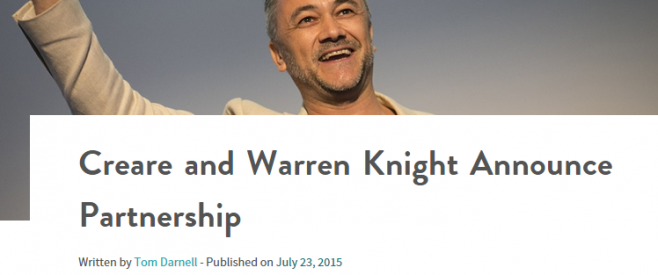It’s no secret that the marketing industry has changed; gone are the days of being able to rely on handing out leaflets and placing a small text ad in the local newspaper to generate sales.
Digital has redefined the marketing landscape, and with £1 from every £7 spent expected to come from online sales by 2018*, those not responding to this are likely to fall behind.
But in an ever changing marketplace with an increasing number of digital channels available, how do you know which tactics to deploy and how to prioritise your marketing budget?
Step 1 – Put it into context
Before you start investing in digital marketing, try asking yourself the following questions:
Your Business: What do you want to achieve? How much budget are you willing to invest? Do you want to establish a long term strategy or are you more interested in short term wins?
Your Audience: How have customers found your company in the past? Which digital channels are they most likely to be receptive to? Do they typically buy your products/services online or in store?
The Market: How competitive is the market in which you operate? Is this reflected online? How do your competitors advertise?
There are various online resources you can use to help you identify the right digital channels for your business, for example Think With Google shows an overview of how each channel assists in the customer journey to purchase for different industries:

Source: https://www.thinkwithgoogle.com/tools/customer-journey-to-online-purchase.html#!/the-uk/business-and-industrial/medium/generic-paid-search
Â
For B2B, Google have identified that organic search (SEO) and email campaigns act more as assist interactions, whereas social media, display and branded PPC campaigns are more likely to be the last stage before purchase.
Step 2 – Optimise your website
Before investing in any online advertising, it is essential that you ensure your website is up-to-date with new and relevant information, is optimised for all devices, and contains clear calls to action. If these factors aren’t in place, your campaigns will be driving customers to a website which provides a poor experience and they are less likely to purchase.
It’s important to check your website is optimised for any campaign you are looking to run e.g. an email marketing campaign that contains links back to your website needs to drive customers to pages which contain relevant content and provide a clear path to conversion.
Step 3 – Choose your tactics
Depending on the competitiveness of your industry online, your budget and whether you’re looking for a short or long term campaign, each digital marketing channel has different benefits:
SEO – Search Engine Optimisation focuses on growing visibility in organic (non-paid) Google search results. SEO is a long-term strategic tactic as particularly in competitive markets, it can take time to generate tangible results. Investing long-term in SEO can generate great returns in terms of brand exposure, increased traffic and conversions.
PPC – Pay-Per-Click advertising involves paying for ads to be displayed in Google search results. It’s a great tactic for generating quick wins as it is possible to bid your way to the top of the search results instantly. However, depending on how competitive the market and search terms you want to target are, it can be very costly. PPC is recommended as a short term solution while longer term tactics such as SEO build momentum.
Display Advertising – Display campaigns enable you to create eye-catching ads, and place these on targeted websites based on the interests of your consumers. Similar to PPC, display advertising can be costly and the return is less likely due to lower average click-through-rates. However, these campaigns can be great from a brand building perspective.
Email Marketing – Email marketing is a great way to engage with existing customers and build brand loyalty. In order to make the most of your email campaigns, it is important to create a clear content strategy – for example, plan out monthly newsletters to keep your customers engaged, along with seasonal promotional offers to incentivise them to purchase.
Social Media – Social media is a great platform to engage directly with customers online. Paid advertising campaigns on the likes of Facebook give you access to their extensive consumer database, enabling you to target your products to customers who have liked your competitors profile, or have specific interests. It is important to have a content strategy in mind and develop a consistent tone of voice across all social platforms in order to get the best out of your campaigns.
Step 4 – Set up goals
Make sure your website is connected to Google Analytics, and add tracking codes to any campaigns you run, so you can measure the traffic specifically coming from each campaign. Setting goals in Analytics will enable you to measure each campaign against your KPIs, be it revenue generation, visits to your site or engagement metrics such as the time spent on site.
Step 5 – Analyse the results
The great thing about digital campaigns is that they can be easily scaled based on their cost and performance. For example, if your PPC campaign is costing too much, you can look at only running your ads at certain times of the day when you know your customers are likely to be browsing. Here, you can weigh up the investment in each channel with the return and tailor campaigns accordingly. It is advisable to utilise a mix of brand building and direct response campaigns to ensure you not only achieve short terms wins but keep customers engaged to sustain momentum.
If you’re unclear as to how to optimise your website, or you would like help in identifying the best digital channels for your business, try Creare’s free Digital Health Check tool, which gives your website a score based on best practises and clear recommendations on how to improve it.
*Source:Â https://www.onestop-webshop.co.uk/blog/prioritise-online-marketing/




 You’re not fooling anyone, especially not your accountant…
You’re not fooling anyone, especially not your accountant…
















































